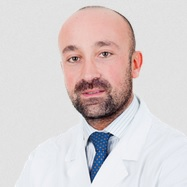Modern Approaches and Innovations on Methods and Imaging Protocols of the Maxillofacial District
A special issue of Methods and Protocols (ISSN 2409-9279). This special issue belongs to the section "Biomedical Sciences and Physiology".
Deadline for manuscript submissions: closed (1 November 2022) | Viewed by 12718

Special Issue Editors
Interests: endodontics; restorative dentistry; oral surgery; dental implantology; prosthetics
Special Issues, Collections and Topics in MDPI journals
Interests: endodontics; prosthodontics; CBCT; dental imaging; endodontic surgery; MRI
Special Issues, Collections and Topics in MDPI journals
Interests: restaurative dentistry; endodontics; prosthodontics; implantology; dental imaging
Special Issues, Collections and Topics in MDPI journals
Special Issue Information
Dear Colleagues,
In current imaging diagnostics, it is necessary to implement modern protocols and approaches, which minimize the patient's exposure to ionizing radiation and subsequent biological damage deriving from these. Future evolutions and radiographic diagnostic exams, always guaranteeing an adequate resolution quality, will have to limit the biological damage caused by ionizing radiations. MRI and Ultrasound are getting better and better, and more attention is being paid to these newly applied exams in the literature. The various diagnostic exams, although recently described in the literature in their recent applications, will make it possible to achieve the same accuracy and precision as radiographic examinations, minimizing the side effects of the latter.
Magnetic resonance imaging, of which there is evidence that allows it to be superimposed on CBCT or CT for dental use, has the only negative sides of its large size, its reduced availability, and the problems related to the data acquisition sequences and to the patient.
Ultrasounds, on the other hand, allow a more specific use for the oral mucosa, and for the most superficial area of the bone, for the evaluation of its density and to discriminate in the differential diagnosis of the various bone lesions. The main limitations are represented by the dependence of the exam on the operator who practices it, by the reduced choice of probes for dental use.
I expect to receive from Clinicians and researchers, original research articles, review articles, and any possible contribution that can improve the knowledge of the various specialists in the head and neck area for the prescription of the most appropriate and least invasive diagnostic exam.
Prof. Dr. Luca Testarelli
Dr. Dario Di Nardo
Dr. Rodolfo Reda
Guest Editors
Manuscript Submission Information
Manuscripts should be submitted online at www.mdpi.com by registering and logging in to this website. Once you are registered, click here to go to the submission form. Manuscripts can be submitted until the deadline. All submissions that pass pre-check are peer-reviewed. Accepted papers will be published continuously in the journal (as soon as accepted) and will be listed together on the special issue website. Research articles, review articles as well as short communications are invited. For planned papers, a title and short abstract (about 100 words) can be sent to the Editorial Office for announcement on this website.
Submitted manuscripts should not have been published previously, nor be under consideration for publication elsewhere (except conference proceedings papers). All manuscripts are thoroughly refereed through a single-blind peer-review process. A guide for authors and other relevant information for submission of manuscripts is available on the Instructions for Authors page. Methods and Protocols is an international peer-reviewed open access semimonthly journal published by MDPI.
Please visit the Instructions for Authors page before submitting a manuscript. The Article Processing Charge (APC) for publication in this open access journal is 1800 CHF (Swiss Francs). Submitted papers should be well formatted and use good English. Authors may use MDPI's English editing service prior to publication or during author revisions.
Keywords
- 3D imaging
- CBCT
- MRI
- ultrasound
- tomography
- Micro-CT
- dental imaging
- CranioFacial imaging
- radiography








